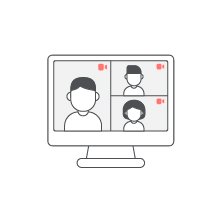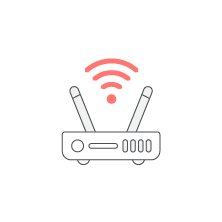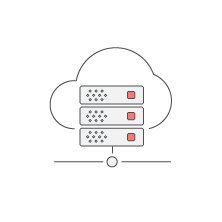Back to School- Staging a Safe Return to Classrooms
- BenQ
- 2021-01-22
While certainly the COVID-19 pandemic has created much interruption and disruption, one can also think in terms of “disaster as a lab for innovation”. In other words, adversity breeds ingenuity and encourages positive change as we adapt. It may be the case that healthier and cleaner classrooms plus the ability to support remote learning should have been higher priorities before COVID-19. It’s just that the pandemic has awakened more educators, parents, and administrators to their essential nature.
And although we mention remote learning as a means to adjust to the pandemic, we should reiterate that it’s not ideal. Kids should be in classes, where the best teaching is achieved. Towards that goal, hybrid learning is actually a supportive measure while we work to make classes much safer and healthier than in the past.
Compared to the rather rigid nature of instruction up until early 2020, we’re definitely witnessing a growing shift towards more flexibility and new models of learning. Hybrid, remote, active, and competency-based learning approaches have all been reinvigorated by changing circumstances, and have a huge role to play in making sure classes are safe for students to come back to in 2021.
Probably the most basic first step has to do with social distancing. Classes need to allow room for spacing students apart as recommended by CDC. Items and furnishings that can be done without should be cleared away (for example lockers). Desks and chairs should preferably have wheels for easy movement and relocation.
Students and teachers need to increase hand washing frequency and classes ought to have ample hand sanitizer supply for everyone in attendance.Temperature checks should also be in place. If needed, face masks can be worn as indicated by appropriate guidance from relevant authorities.
In the “old world”, kids often went to school while sick with a cough or runny nose. To mitigate fears and reduce the risk of sickness, students and parents should be encouraged to exercise greater awareness. Students who don’t feel well can stay home and attend virtually, which is where hybrid or remote learning comes into its supportive role again.
As much as possible, items and equipment shouldn’t be shared. Students can be allocated individual items or bring their own from home. This applies to everything from pencils and calculators to school books and tablets. Only items protected by the nanosilver coating (explained later) may act as communal, and even then to a limited degree.
It’s also better for the teacher to do most of the moving around the classroom. There’s only one teacher but often dozens of students. Better for a single person to mingle than for dozens to do so. In addition, it might be better if each class group was assigned to a particular classroom, and teachers moved around the school, not reverse as currently.
However, socialization is of course an essential motivation for returning to classrooms. Schools should find creative ways that allow students to mingle as much as possible without violating health protection protocols. For example, lunches shared in classrooms rather than in a big cafeteria setting offer a golden opportunity for interaction during communal meals, while small enough in scale to remain manageable.
These may seem like small things, but their long term value is considerable. That’s because despite initially appearing to be annoying or cumbersome, they will enable the majority of learners to return to classes safely in time, and are therefore worth the effort.
Furthermore, we have a lot of additional insights and tips for healthy schools related to new educational technology that we highly recommend you check out. See our blog here.
By balancing remote learning with in-class attendance, tools such as interactive displays boost teaching and learning, collaboration, and personal hygiene.
While interactive displays and other educational technologies have been around for a while, until the pandemic little thought was given to health-focused features, most notably anti-microbial treatment. In the post-COVID landscape, there’s rapidly growing demand for technology such as nanosilver application, which is proven to destroy the majority of viruses, bacteria, and fungi. Anti-microbial layers on interactive displays, lab equipment, and even desks provide a big increase in protection against cross infection.
Appropriate educational technology helps convert plans of returning to classes into actual action and school resumption. Organizations must support hybrid learning because the reality is that many students will need to attend remotely. Hybrid classroom offers the flexibility required to accommodate in-person and virtual attendance. Whether students don’t feel well or simply wish to be cautious, schools and educators can leverage a host of tools to ensure education keeps on regardless. While perhaps not as effective as in-class learning, remote learning is certainly better than no learning.
Interactive displays and smart projectors capable of supporting video conferencing are vital for the new era of learning. Short of that, any video conferencing setup that meets the required capacity of learning may suffice. Webcams and microphones must be of good quality and clarity so that materials get conveyed in high detail and without disruption (read about how BenQ Interactive Displays help ensure high audio quality here). That also means schools must invest in truly high speed internet connectivity. Cloud storage accounts or physical storage devices need to be prepared so that class sessions can be saved and recorded for future reference.

Video-conferencing software

Webcam

Microphone

High-Speed Connectivity

Cloud / Physical storage
All of that means students and teachers need to become familiar with new hardware and apps. If that entails short training sessions to prevent lengthy troubleshooting downtime later, so be it.
On a more logistical level, schools must commit to maintaining high standards of hygiene. That includes having full time sanitation staff to regularly disinfect classrooms, especially interactive displays, chairs, desks, door handles, and other shared surfaces. Cleaning supplies and materials must be of the best quality possible, corners should not be cut in this regard.
To ensure regular, constant supply of necessary detergents and other cleaning products and tools, schools can take inspiration from growingly popular, AI driven, automated grocery delivery services, and innovative products like smart fridges. Such solutions allow households to have their daily produce and goods replenished regularly with the use of data and automatic inventory checks and connection with e-commerce sites. It’s easy to imagine how schools could set up systems that would keep inventory of cleaning supplies in a similar way, and automatically place orders for refills when needed.
For kids from kindergarten to high school, having a proper, in-person education is of vital importance. Without a solid foundation for K-12 education, mental wellbeing and social development suffer.
But even when the pandemic subsides, it’ll be important to maintain safe classes, not just for peace of mind, but to reduce the likelihood of another destructive outbreak and to mitigate the suffering inflicted by seasonal influenza. The health measures detailed above don’t get in the way. Rather, they pave the way back and forward to a better future.









